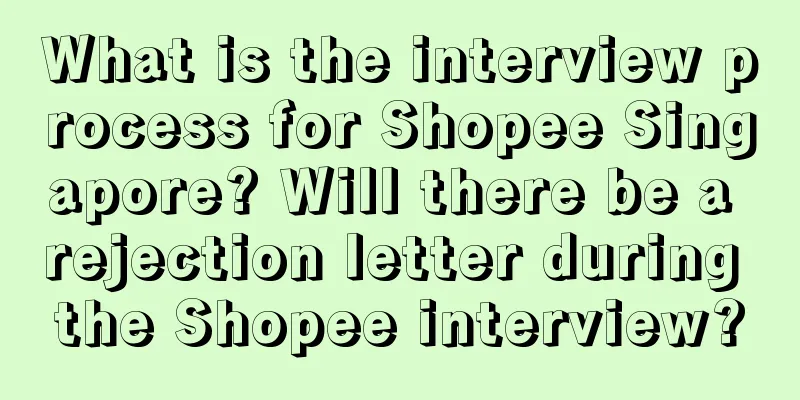To do a good job in brand management in 2024, please understand these 50 methodologies!

1. The meaning of marketing is no longer to help brands with advertising and marketing activities, but a closed loop of "brand communicating with consumers - understanding consumer needs - and driving product innovation through consumer feedback." 2. The essence of brand communication is repetition. Doing simple things repeatedly is the brand effect. But you should spend money on visible things - visible products and visible content. These are the places to invest, not marketing. 3. Brand upgrading is not just about changing VI and SI, it also includes product R&D upgrade, experience upgrade, process upgrade, aesthetic upgrade, marketing upgrade, brand role transformation, etc. It is never a matter of 1+1=2, but 0.1+0.1+0.1+0.1+infinity=0.1 or infinity. 4. Content Marketing [1% Rule] : Among 1,000 people on the Internet, only 10 will create content, another 100 will interact, and the remaining 890 will browse. To create content and gather users, you need to think clearly about which group you want to gather potential energy in, and don't think that everyone likes you. 5. If you only see your peers, the result is homogeneity, copycats, and price competition. But market competition is not a price competition of homogeneous products, but it happens around market demand, meeting demand, or guiding demand. Users pay the bill, you only need to hear their voices, everything else is nonsense. 6. In many cases, there is no essential difference between the second and the first, unless the value derived is different from and better than the first, and the first in a new field is achieved. This requires enterprises to create products with differentiated advantages in the context of increasingly severe homogeneous competition: either you are indispensable, or you meet unmet needs. 7. Communication focus is an immediate scene of a targeted group of people, focusing on the group, focusing on the scene , and consistent content to the outside world, and then widely disseminating. Focus is not conservative, but knowing what you want and what are the useful components of the brand. Changing your mind frequently will only waste resources and even cause disasters in the middle of the process. 8. Often we find that the relationship between brands and consumers is indifferent, which makes many users indifferent to brands, that is, it is difficult for users to have an emotion towards the brand. Not being able to tease users' emotions is the most dangerous part of branding. 9. If you want consumers to know you, understand you, trust you, use you, and use you over and over again, you need to repeat your brand, your appeal, and your symbol obsessively. This strategic repetition is like a sphere, 360°, and there will be feedback no matter what angle you apply force to it. 10. When consumers measure the price of a product, they are actually measuring the value of the product. In other words, when consumers pay for a product, they are essentially paying for the "value that the brand brings to it." Consumers' perception of the value of a product is the most critical factor in determining the price of the product. 11. Find the value anchor of the product: What do consumers really need? Why do they have such needs? Can we satisfy them? Therefore, give users a reason to buy and grasp user needs. This value anchor must be single, accurate, and irreplaceable to users. 12. The money that companies spend each year on promotion (including advertising, public relations, content, social marketing, etc.) should not be considered as "expenses" but as "strategic investments" and long-term investments . People who do not have a strong heart should not try to build a brand easily. 13. Content is connected to user needs on one end and to the core of the brand on the other, and is becoming a "new shelf" for new consumer brands to showcase themselves. In other words, consumers are actually paying for content before they get the product. 14. Good looks are just the beginning. To make the product look good and sell well, we must continue to create products that can bring pleasure to consumers, so that the emotional connection between the product and consumers is greater than the consumer's demand for the physical function of the product. This is what we call rising from selling products and brands to selling value and lifestyle. 15. Interest-based consumption is a relatively long-term and stable consumption in the future. The underlying logic behind this is that young people are using interests to match circles : driven by interests, young people with common values, attitudes towards life, hobbies, and consumption tendencies will naturally connect and combine into a cultural circle. 16. Brand temperament = the connotation, life or soul of the brand, also known as endogenous force and static sales force. Only by innovation can a brand be distinguished from its competitors and occupy a unique position in the hearts of consumers. 17. Like people, brands also have their own life cycle, going through the process of birth-growth-maturity-aging. But unlike people, the brand life cycle is not simply divided by age, but is tied to the market environment, economic environment, consumer behavior, and other factors. 18. Build a personality and brand/First of all, you have to be fun and know how to have fun. Fun is not pure hype, but the "personality" becomes smart and interesting, and it is applied to products, services, marketing and other aspects, becoming a culture and spirit. 19. Consumers may not necessarily be loyal to brands, but they will definitely be loyal to the release of their own social signals. When consumers choose a product, apart from factors such as usability and function, they also choose a label as a person in society, and some signals in various aspects such as aesthetics and attitude. 20. If there is no brand endorsement, every time you sell a product, you have to start all over again. If there is a brand endorsement, tactically, it can reduce consumers' cognitive costs, communication costs, trust costs, and dissemination costs . In terms of assets, it can increase brand premium. The scarcer the brand value, the higher the competitive barriers. 21. Positioning is not just a sentence, a simple slogan, piling up gorgeous words or giving a beautiful empty framework, but the answers to these three questions: "What are you? How are you different? How do you think so?" 22. A key factor in creating a product is: whether you can find universal values, whether you can identify the real "pain points" of today's consumers, and based on this find the brand's unique advantages. This advantage is not just about how you do better than your competitors, but how you can enable consumers to live a better life. 23. Many companies think that brand stories are too fake, but in fact, the companies just tell fake stories. Brand stories are story-telling expressions of brand positioning and emotional core. Together with brand mission, vision, and value proposition, they are the weather vane of what the brand says, what not to say, what to do first, and what to do later in communication. 24. User operation is a job that requires user thinking and long-term investment. Interaction is a give-and-take, not a one-man show. Communication is about impressing me, not about giving me a big gift package. 25. All products have life as long as you put in the effort and can tell the story. The same is true for the life of an enterprise, which must have a soul. You use your product to impress users, but what is the point that impresses them? The key is to put the elements that impress people into your product and give it a soul. 26. The essence of refined operation is the operator. Based on deep digging into the underlying foundation of user needs, the operation strategy and experience chain are optimized for different user groups. The right time, channel and method are used to give the right users what they want, thereby exchanging value with users and facilitating transactions. 27. Good packaging can better serve the product. In addition to being noticed at first sight on the shelf or on the page, it also needs to serve the function of brand communication . 28. Rather than competing for consumers’ attention, gaining high-frequency repurchases is the battlefield that brands must challenge. Consumers may buy from you out of curiosity, but when they decide to repurchase, they will definitely return to rational consumption, and quality, service and other aspects will become the key to decision-making. 29. If your brand urgently needs to establish a strong relationship with consumers, then your brand is very suitable for building a brand personality. Brand personality is a dominant gene, which can be applied to your official WeChat, services, marketing and private domain operations to help your brand: narrow the distance, enhance trust, resolve weaknesses, and create differences. 30. Good service means always thinking one step further for consumers. When a brand presents itself to the outside world, it always reflects the quality of "altruism". This means it is 99% successful in terms of genes, and the remaining 1% is just a matter of "skill". 31. In the process of creating content IP, only by having the advantages of high content standards, high public opinion reputation, and high user stickiness can it have a better chance of becoming a popular content and a super IP. There are three points that need to be focused on: creativity, event-based, and sustainability. 32. Behind commercial competition is a competition for resources. The reason why some new brands can grow rapidly is because of their ability to integrate resources, including back-end industry chain resources and front-end marketing resources. This integration ability can be said to be a brand's "talent", and it is also part of the brand's core competitiveness. 33. Once an enterprise loses the spirit of pursuing truth and the ability to understand things, it may lose the instinct of positive growth. The insight into the essence determines how far you can go. The judgment of dividends determines how fast you can go. Boil frogs in warm water, and most frogs will be boiled. 34. Refined user operation capability = brand building The ability to directly face consumers is a must for enterprises. It is never achieved overnight, and there is no universal methodology. Trial and error, improvement, iteration, optimization, and achieving growth through refined operations are the eternal tasks of brands. 35. The cost of acquiring a new user is 5-10 times the cost of maintaining an old user. Many business operators mistakenly believe that as long as a new product is slightly better than the original product, it will be enough to attract users at first sight. However, once it comes to shaking up the old habits of users, the product may not always have the upper hand, especially when many users have already chosen other competitive products. 36. Does a brand need to build a persona? Here is a criterion for judging: what kind of scene and communication context do you want to integrate into by building a brand persona, and how to carry the meaning of the product ? Once you have figured this out, you can evaluate whether your brand needs to build a persona. 37. Whoever can "become the public's mouthpiece", whoever can better satisfy the public's emotional value, will be able to make everyone feel that you are a warm brand, thereby helping to establish deep emotional connections. 38. For new brands , what is more urgent than brand dreaming is how to become famous in poverty. Most of them actually rely on small steps and slow penetration to build up, accumulate the first batch of users and cash flow, and then feed back to marketing. 39. The continuous switching of consumers between online and offline means that commodity shelves are breaking the limitations of time and space. Any potential consumer touchpoint is a shelf position where a transaction may be concluded. To promote transactions, brands always have to do one thing: get a more prominent shelf position in the eyes of target consumers and leave a good impression. 40. Marketing is about creating user-perceived value: without changing the physiological and functional experience of the product delivered to consumers, to amplify the customer's perceived value (premium part) of the product. 41. Brand building is related to product competitiveness to a certain extent, but in today's market, the products we consume are mostly branded products , and market competition is no longer just a competition of product quality. Product quality is the basic requirement of consumers in choosing products, and the comprehensive value brought by branding is the main reason why consumers consider buying now. 42. Create product differentiation features that consumers can perceive, rather than requiring consumers to conduct repeated research themselves. This will greatly reduce the cost of consumers' purchasing decisions. 43. There is a widely spread new Moore's Law in the marketing circle - the technology adoption life cycle. In the first stage, the core of the product is to solve the "satisfaction point" of 2.5% of innovative consumers . If most products cannot cross this gap, they will die. 44. The sales volume of a hot product must be good, and the overall sales volume must be good. This reflects two dimensions. One is the peak sales volume. That is to say, the sales volume has a trajectory and a prominent peak. Of course, it will have a slow process afterwards, but it is sustainable. The second is the traffic value. The core of a hot product is to attract traffic, and the linkage rate of a hot product is also a key link. 45. What can really penetrate into the minds of consumers and occupy permanent mental resources is definitely not a product differentiation point of interest, but a moving value. The product's interest point will only make people like it temporarily, but not forever. Only the temperature of the brand can measure how far the brand can go. 46. Behind the design is the inner core of the brand’s business logic, presenting a high-level understanding of the essence of life, which makes consumers identify and like it. It goes beyond the single product attribute and is a competitive barrier for the long-term development of the brand, as well as the biggest factor in the virtuous cycle of quantitative growth. 47. When content reaches users for the first time, it acts as a filter. Users who hold the same values as the content are attracted, stop and even have a strong resonance. So the content we output is essentially communicating with fans, so what they need is content that is a conversation between people, not "tube tone". 48. Price is always the last straw that breaks the camel's back when upgrading, and it is never the first step. This means that affordable and high-quality products are always excellent genes with a broad mass base. 49. To build a brand, to become a brand, to become a century-old brand, the most important core energy is restraint. If the brand is not well developed internally, even if it has a prototype, it will not have long-term vitality, so it might as well go slower, slower, and let it grow in accordance with the laws of nature. 50. Brand operators should abandon survivor bias and not infinitely magnify the successful experience of a brand based on a specific environment. Instead, they should unravel the truth and truly see what others did right from 0 to 1 and from 1 to 10. Author: Sister Mulan talks about brands; Source public account: Sister Mulan (ID: 958702) |
<<: If you want to avoid marketing failure, the boss must put his face on the ground
Recommend
Fresh graduates drifting in Yiwu
At a time when employment pressure is very intense...
Are Shopee's preferred sellers reviewed once a week?
Many Shopee merchants want to become preferred sel...
Fighting 618 again: Xiaohongshu’s newcomer test, video account waiting for adulthood
Video accounts are an incremental growth for Douyi...
Which is the exchange rate for RMB settlement? Will the exchange rate change?
As the global economy becomes increasingly interco...
How to choose a customer acquisition channel? Share a real case study of Zhiyin and Xiaohongshu
This article shares a case of how a startup brand ...
What is the difference between Lazada local stores and cross-border stores?
Lazada has both local stores and cross-border stor...
Taotian Jingdong: One dilemma, two solutions
In the face of fierce competition from Pinduoduo, ...
8 favorite sentences in January
Unconsciously, we have passed the first month of 2...
How to convert cross-border e-commerce? How to improve the conversion rate?
If businesses want to go beyond the domestic marke...
What should I do if I violate the rules in exchanging products on Shopee? Introduction to the trading policy
Although it is easy to operate a store on Shopee, ...
6 new marketing trends to teach you how to tell a good brand story
In the first half of 2023, the consumer market gra...
Beverage brand Liquid Death relies on "funeral style" to capture hardcore fans?
Exploring new boundaries of brand marketing, Liqui...
What does an Amazon local account mean? What are the types?
Generally, you can register an account on Amazon. ...
Video account major category
This article will give you an in-depth understandi...
What are the Amazon compliance submission tips? How to use Amazon compliance features?
Merchants who have opened stores on the Amazon pla...









